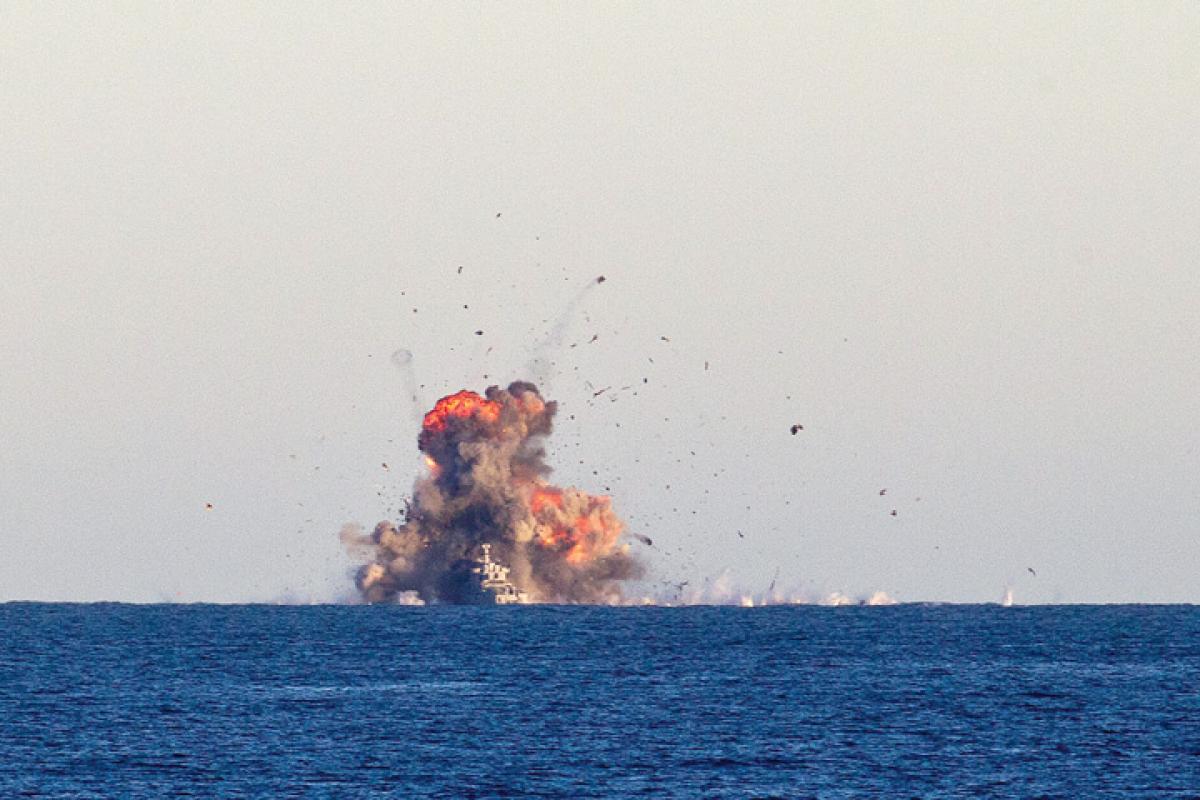On 5 June Norway announced the first live fire ship-to-ship engagement test of its Naval Strike Missile (NSM). The new antiship weapon was launched from the Steil, a stealthy 260-ton Skjold-class air-cushion patrol boat. Following launch, the missile was accurately guided toward the retired 47-year old Oslo-class frigate Trondheim, and the 264-pound warhead detonated amidships, severely damaging the 1,700-ton target ship. The stricken Trondheim was then towed back to port for further analysis. The NSM is a modern turbojet-powered, sea-skimming, GPS- and infrared-homing replacement for the Penguin-series missiles. With a range of more than 90 miles, ship-launched versions of the NSM are planned for service with Norway, and a number of other countries have expressed interest in importing the weapon. A land-based version is on order for use by Polish coastal defense forces, and an air-launched variant is also under development.
Canada’s Department of National Defence has announced selection of a design for its next-generation Joint Support Ships (JSSs). The winning proposal was submitted by Thysenkrupp Marine Systems and is based on the German navy’s 20,000-ton, 174-meter, Type 702 Berlin-class replenishment ship, pictured here. The JSS program will eventually replace Canada’s Protecteur-class replenishment ships, but the new JSS will require the additional capability to support peacekeeping forces ashore and to transport some of their associated equipment. Original plans called for up to four JSSs to begin entering Canadian service around 2012. However, that program was halted in 2008 and relaunched in 2010. Plans now call for the construction of only two JSSs, one to be based on each coast, with a future option to purchase a third unit. Both ships will be built in Vancouver and are due to enter service by 2020; their mission requirements include supply, replenishment, logistics, and sealift capabilities.
New Zealand’s military has announced plans for a major expansion of its naval aviation arm by acquiring ten new SH-2G Seasprite helicopters from Kaman Aerospace. They are expected to replace the aging and overburdened fleet of five SH-2Gs currently in use. The new airframes originally had been planned for service with Australia, but that contract was canceled in 2009, and New Zealand soon began investigating their potential acquisition. Despite the requirement for embarking five helicopters on board its warships, New Zealand is only able to keep two Seasprites operational. With the acquisition of these ten new airframes (two of which will be used as spares) the Royal New Zealand Navy will be able to maintain five operational helicopters, each capable of conducting antisurface operations through the employment of the Penguin antiship missile, antisubmarine missions while armed with torpedoes, or other general-purpose helicopter duties. Three of the new SH-2Gs are due to enter service by late 2014, and all ten are to be delivered by 2016.



